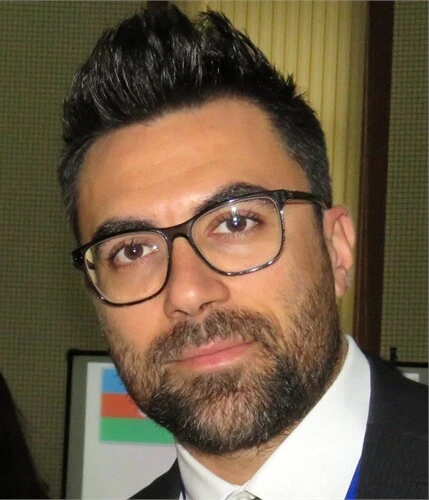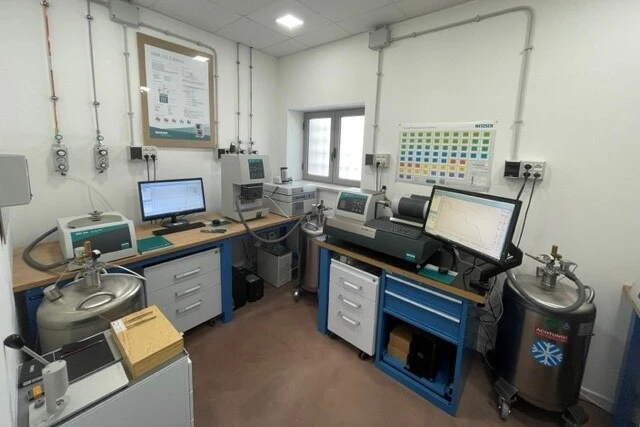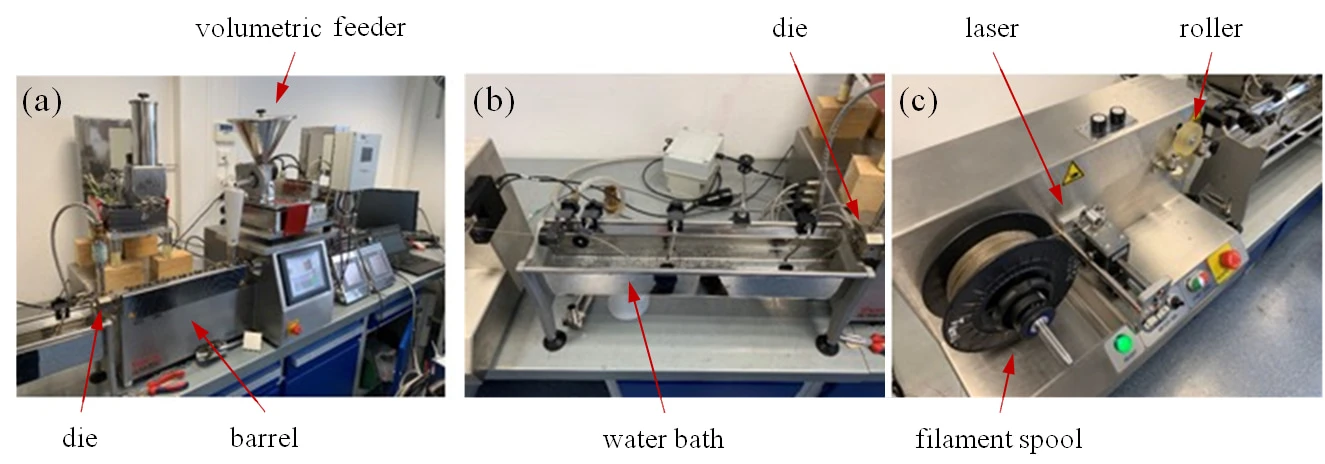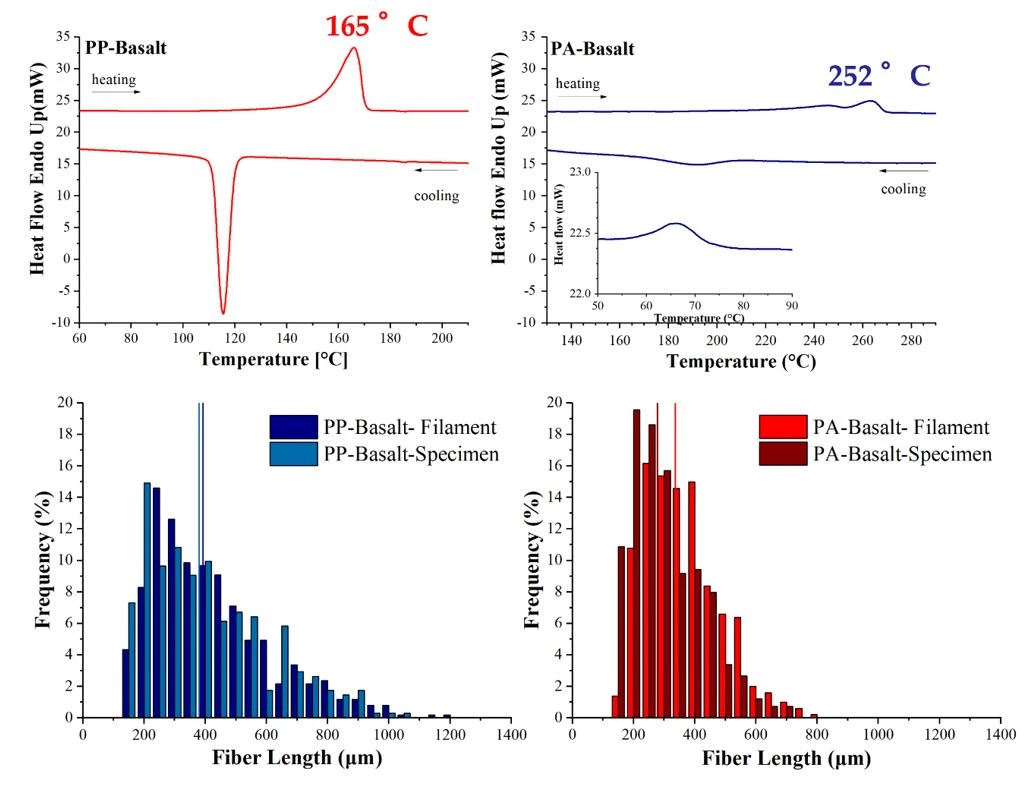
Customer SUCCESS STORY
Optimization of Extrusion, Injection Molding and 3D Printing Manufacturing Processes of Polymers and Polymer Composites for the Automotive Industry
A Field Report by the Faculty of Engineering at the University of Rome
In this customer success story Jacopo Tirillò, Full Professor in materials science and technology at the Department of Chemical Engineer Materials Environment at Sapienza University of Rome talks about his research work regarding the development of an eco-friendly composite material for automotive applications exploiting a fully bio-based polyamide. He also gives insights in his investigations in the field of Additive Manufacturing and process automation for hybrid and composite materials and his work on 3D printing of low-filled basalt.

„Our Thermal Analysis Laboratory aims to provide a service package to both Academia and Industries which includes the high-standard quality instruments provided by NETZSCH Analyzing & Testing along with the know-how of professors, researchers and technicians. The main goal is to achieve an interconnected and efficient network with both universities and industries to ensure highest research quality and a fruitful growth of both manufacturing processes and products with a view to the economic development of the region and more generically of the country. Currently, we are working with companies like Bridgestone, ABB, Treves-Roi, Stellantis, ESA, ASI and AVIO Space – just to name a few.“
The Faculty of Engineering at the well-known University of Rome, Italy was found in 1935. In 2010, following the reorganization of Sapienza University, the Faculty of Engineering was divided in two Faculties: Information Engineering, Computer Science and Statistics, and Civil and Industrial Engineering. The latter, nowadays includes six different departments: Astronautical, Electrical and Energy Engineering, Chemical Materials and Environmental Engineering, Civil, Building and Environmental Engineering, Mechanical and Aerospace Engineering, Structural and Geotechnical Engineering, Basic and Applied Sciences for Engineering.
Besides the main location in Rome, the faculty consists of two branch offices in Rieti and Latina. More precisely, since 1991, the city of Latina has been hosting a branch of Sapienza University of Rome, which includes the Faculties of Engineering, Economics and Commerce, and Medicine and Surgery.
Today we have the pleasure to interview Jacopo Tirillò, Full Professor in Materials Science and Technology at the Department of Chemical Engineer Materials Environment at Sapienza University of Rome.
He has more than 15 years of experience in the field of materials science and technology documented by over 170 scientific publications. Prof. Jacopo Tirillò will give us insights in his research work at the new thermal analysis laboratory in Latina: he is working in the field of polymers and polymer composites to optimize manufacturing processes such as extrusion, injection molding and 3D printing using by means of NETZSCH thermal analysis instruments.
Prof. Jacopo Tirillò, in June 2023 you and your team just celebrated the opening of the new thermal analysis laboratory at the location in Latina, a branch office of the University of Rome, to carry out academic projects and provide technical application and analytical support to industrial customers. Why the opening of this new laboratory is so innovative for your region and for your university?
“The opening of this Thermal Analysis Laboratory represents for the Polo Pontino and for La Sapienza a center of excellence in the characterization of materials and a point of reference for companies and research centres. This laboratory (figure 1) is part of a larger project that will see the Polo Pontino become a centre of excellence in material analysis in the coming years, in particular in the areas of sustainability and renewable energy.”


Which services are you going to offer in detail, both to academia and to industries?
“The new Thermal Analysis Laboratory aims to provide a service package to both Academia and Industries which includes the high-standard quality instruments provided by NETZSCH Analyzing & Testing together with the know-how of professors, researchers and technicians obtained over years of experience and professionalism. The main goal is to achieve an interconnected and efficient network with both universities and industries to ensure the highest research quality and a fruitful growth of both manufacturing processes and products with a view at economic development of the region and more generically of the country. Currently we are working with companies such as Bridgestone, ABB, Treves-Roi, Stellantis, ESA, ASI and AVIO Space – just to name a few.”
How does thermal analysis help solve challenges in your research activity?
“Our research group works mainly in the field of polymers and polymer composites. The rheological, mechanical and dimensional behavior of these classes of materials is highly dependent on temperature, therefore the exploitation of thermal analysis is fundamental to ensure a 360 degree overview on the material under study. For example, thermal analysis is fundamental to identify the best rheological conditions to optimize manufacturing processes such as extrusion, injection molding and 3D printing, but it allows for shedding a light on the variations in mechanical behavior of a material allowing validating or discharging its feasibility for a certain application. Here, we use different thermal analysis instruments by NETZSCH, such as the Differential Scanning Calorimeter (DSC), Dynamic-Mechanical Analyzer (DMA),Dilatometer (DIL) or the Fourier Transform Infrared Spectrometer (FT-IR) coupled to a Thermogravimetric Analyzer (TGA). These are definitely powerful and necessary tools in the field of polymers and polymer composites development.”
Prof. Tirillò, could you please provide examples of how you used thermal analysis so far?
“In the framework of the project Thalassa (PON “R&I” 2014–2020, grant ARS01_00293, Distretto Navtec) funded by MUR (Italian Ministry for University and Research), the research group carried out many studies to propose new bio-based composite solutions. One of the research work focused on the development of an environmental friendly composite for automotive application exploiting a fully bio-based Polyamide 11 (PA11) synthesized from castor oil reinforced with an intra-ply flax/basalt hybrid fabric to keep the eco-friendly nature of the material. Here, we investigated a plasticized PA11 together with the native PA11 with a view to improve the impact response of these structures (figure 2). The plasticized PA11 proved to be effective in providing a higher toughness delaying penetration phenomena and reducing laminate permanent indentation at room temperature, but it also endowed the polymer with a Melting Temperatures and EnthalpiesThe enthalpy of fusion of a substance, also known as latent heat, is a measure of the energy input, typically heat, which is necessary to convert a substance from solid to liquid state. The melting point of a substance is the temperature at which it changes state from solid (crystalline) to liquid (isotropic melt).melting temperature almost 10 °C lower as proved by the DSC scan, see figure 2.
This aspect is crucial to improve the processability, but also to preserve the vegetable fibers used as reinforcement which are highly thermal sensitivity. The thermal degradation of the fiber is highly undesired because may significantly jeopardize its reinforcing effect. More information on this work can be found in the article “Toughened Bio-Polyamide 11 for Impact-Resistant Intraply Basalt/Flax Hybrid Composites” (DOI:10.3390/macromol2020010) published on Macromol in 2022.”

Thank you for these interesting insights! Is there any other research project and the results of it that you would like to share with us?
“Yes, with pleasure. Another example showing the importance of thermal analysis in materials characterization was given in the work carried out in the framework of the Research Project AMICO (code ARS01_00758) funded by the Italian Ministry of Education, University and Research. The project focused on Additive Manufacturing and process automation for hybrid and composite materials and, in this context, a research work on 3D printing of low-filled basalt PP and PA12, which is now under consideration for publication in the Journal of Composites Science, was carried out. Additive manufacturing is an on the rise technique with a great potential in many industrial fields thanks to numerous advantages such as a higher freedom of design, waste minimization, fast prototyping, product customization, structure lightweighting through generative design and topological optimization. Among all the 3D printing techniques available, Fused Deposition Modeling (FDM), which is designed for thermoplastic polymers and composites, is the cheapest one with low machine investment and raw material costs. Despite all these advantages, the polymeric components produced by FDM are characterized by lower mechanical performance than the corresponding injection molding ones due to the high porosity generated by the discontinuities between adjacent layers. On this basis, the work proposed a viable way to exploit the advantages deriving from FDM while trying to fix the main issue connected with lower mechanical performance by using low filled polymeric filaments. In particular, PP and PA 12, which are the two main polymeric materials used in the automotive sector, were reinforced with a 5 wt. % of basalt fibers. The results obtained were good with a significant improvement in tensile stiffness and DensityThe mass density is defined as the ratio between mass and volume. density values comparable with the ones of the neat polymer processed via injection molding thanks to the intrinsic porosity deriving from FDM. In particular, the final components were characterized by a 0.88 g/cm3 DensityThe mass density is defined as the ratio between mass and volume. density for PP and 1.01 g/cm3 for PA12 basalt-filled composites, which are comparable with the 0.91 g/cm3 and 1.01 g/cm3 of the related neat matrix used in injection molding.
In this framework, the knowledge of materials melting behavior was fundamental to optimize both filaments production by extrusion and components 3D printing. DSC analysis allowed to disclose PP and PA12 melting temperatures, i.e., 165°C and 252°C, and the printing temperatures selected were 260 and 300°C, respectively. The printing temperature selected for PA12 was perfectly compatible with its Melting Temperatures and EnthalpiesThe enthalpy of fusion of a substance, also known as latent heat, is a measure of the energy input, typically heat, which is necessary to convert a substance from solid to liquid state. The melting point of a substance is the temperature at which it changes state from solid (crystalline) to liquid (isotropic melt).melting temperature, but it was also the 3D printer upper limit. Considering the strong influence of fibers length in composite mechanical response, the fibers length distribution of both polymeric configurations was evaluated before and after specimens 3D printing and the resulting data are shown in the figure 4. PP specimens display just a slight decrease in the average fibers length while PA12 displayed a more significant reduction in fibers average length probably due to polymer rheology. In particular, PP filament was 3D printed using a temperature 100°C higher than its melting one thus ensuring a good fluidity of the melt while PA12 was 3D printed using only a 50°C overheating which entails a higher viscosity of the melt and an increase of the bending moments applied on the fibers.
Thermal analysis was again a powerful tool to support and understand the morphological variations experienced by the composite and disclosed a potential improvement in material response simply selecting a more performing 3D printer.”


And which are the current projects that you are working on, which involve the use of our thermal analysis instruments?
“It is actually difficult identifying one of our ongoing projects which won’t benefit of thermal analysis. The research group is involved in two PRIN projects, i.e., PRIN 2023 “Bio-cOmpOsite Material dEsign foR pAckagiNG (BOOMERANG)” and PRIN 2022 “additive mAnufactuRing for liGhtwEight joinTs (TARGET)”, and two PNRR projects, i.e., Spoke 11 Innovative Materials and LightWeighting of Centro Nazionale per la Mobilità Sostenibile (MOST) and Spoke 3 “Green and sustainable products & materials from non-critical and secondary raw sources” of PE11 “Made in Italy Circolare e Sostenibile” (MICS). Moreover, an ERC Advanced Grant for the ButterFly project was awarded to Prof. Filippo Berto.
All projects aim at proposing new materials with an improved sustainability and a lower environmental impact and at developing new lightweighted structures. In both cases thermal analysis is crucial to place on the market performing products which fulfill standards requirements and to optimize the manufacturing processes to reduce as much as possible their environmental impact while ensuring high quality output.
I imagine, the collaboration with NETZSCH Analyzing & Testing will lead, as it has already done, also in future to technological advancement of our laboratory both in terms of equipment and knowledge.
Finally, I would like to heartfully thank all the team members of the research group: prof. Fabrizio Sarasini, Prof. Filippo Berto, Dr. Claudia Sergi and Dr. Irene Bavasso.”
Prof. Tirillò, thank you very much for the insights into your exciting research work. We are happy to contribute in the future, not only with our instruments, but also with our consulting services and new training events.